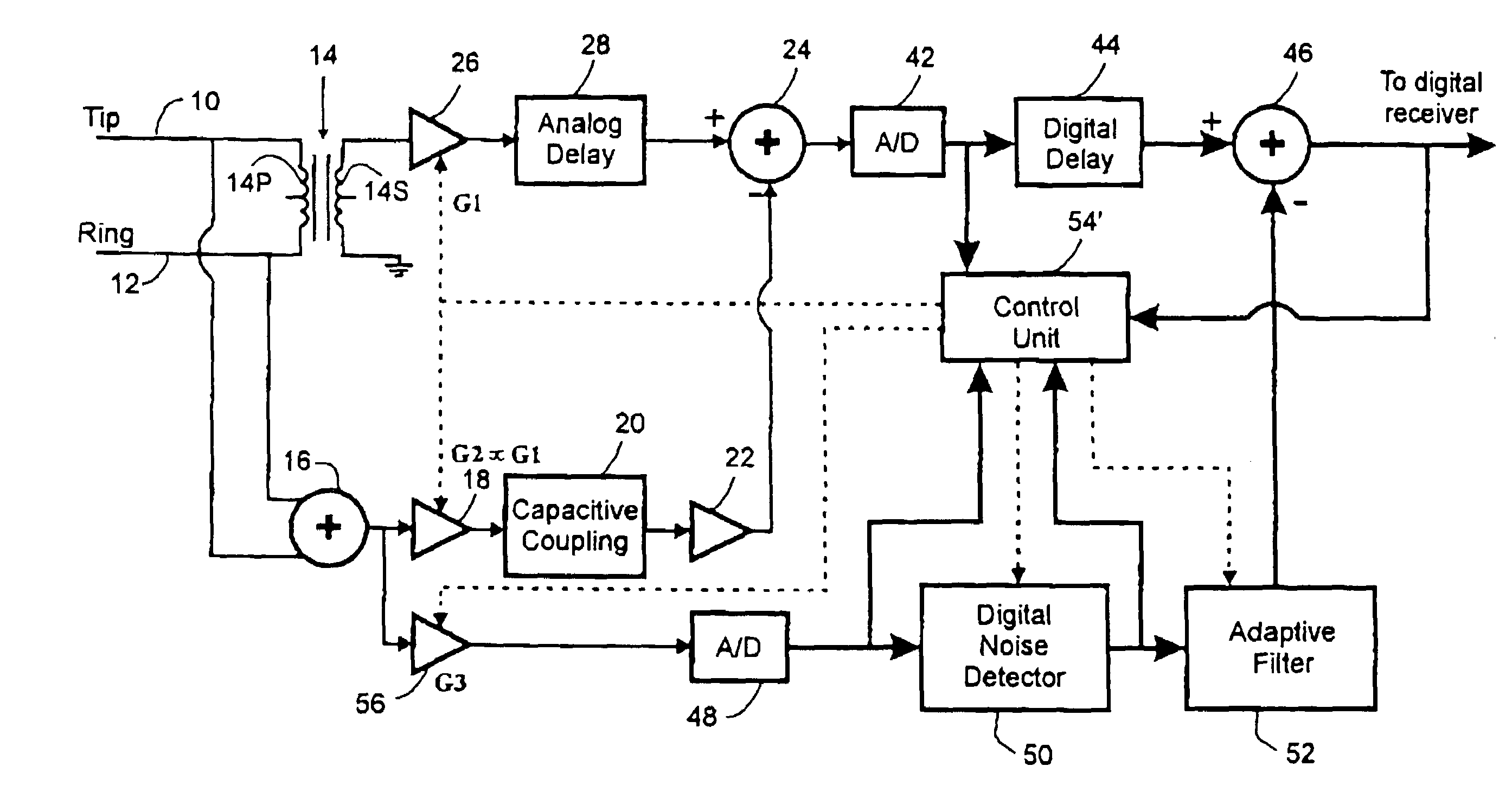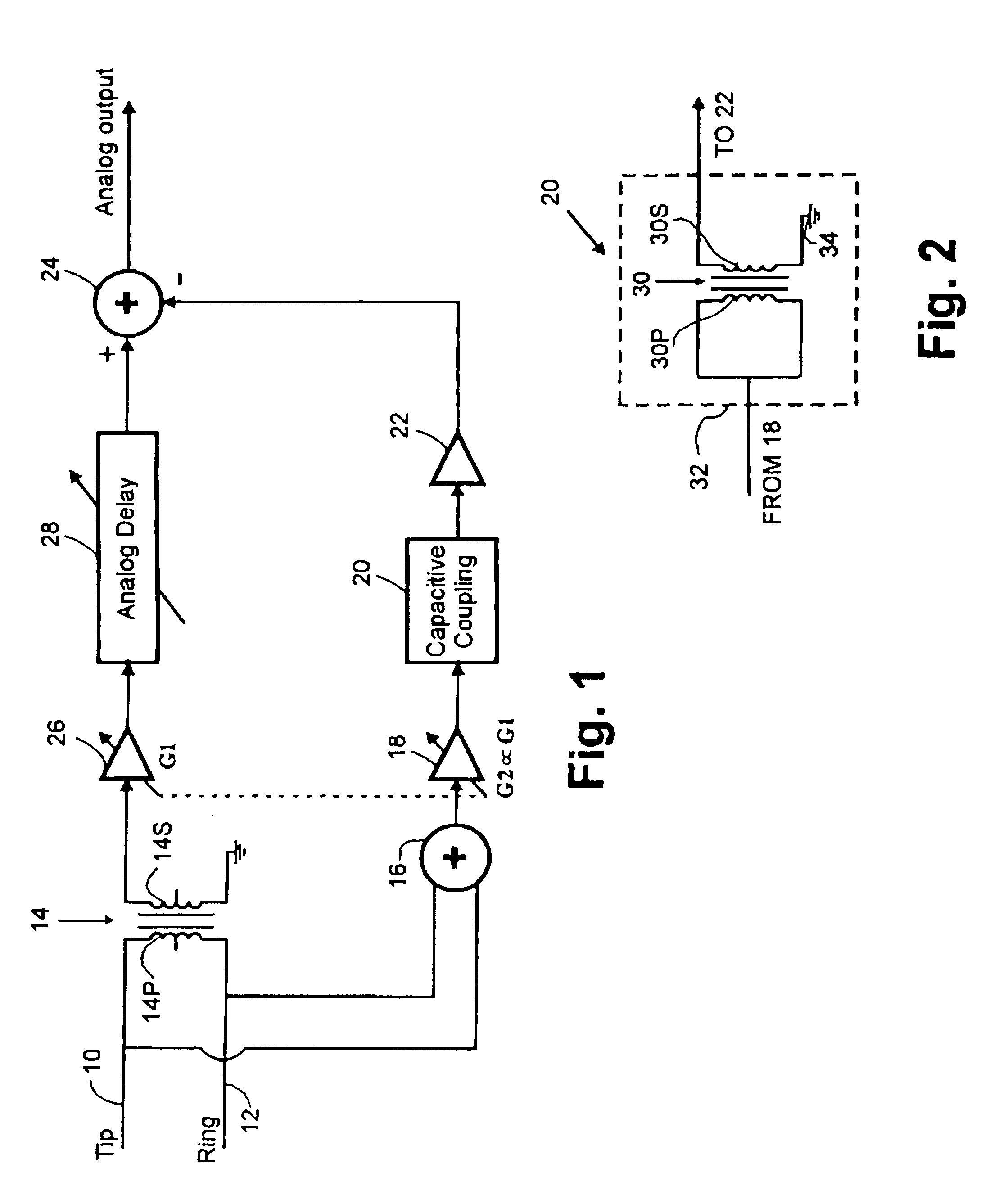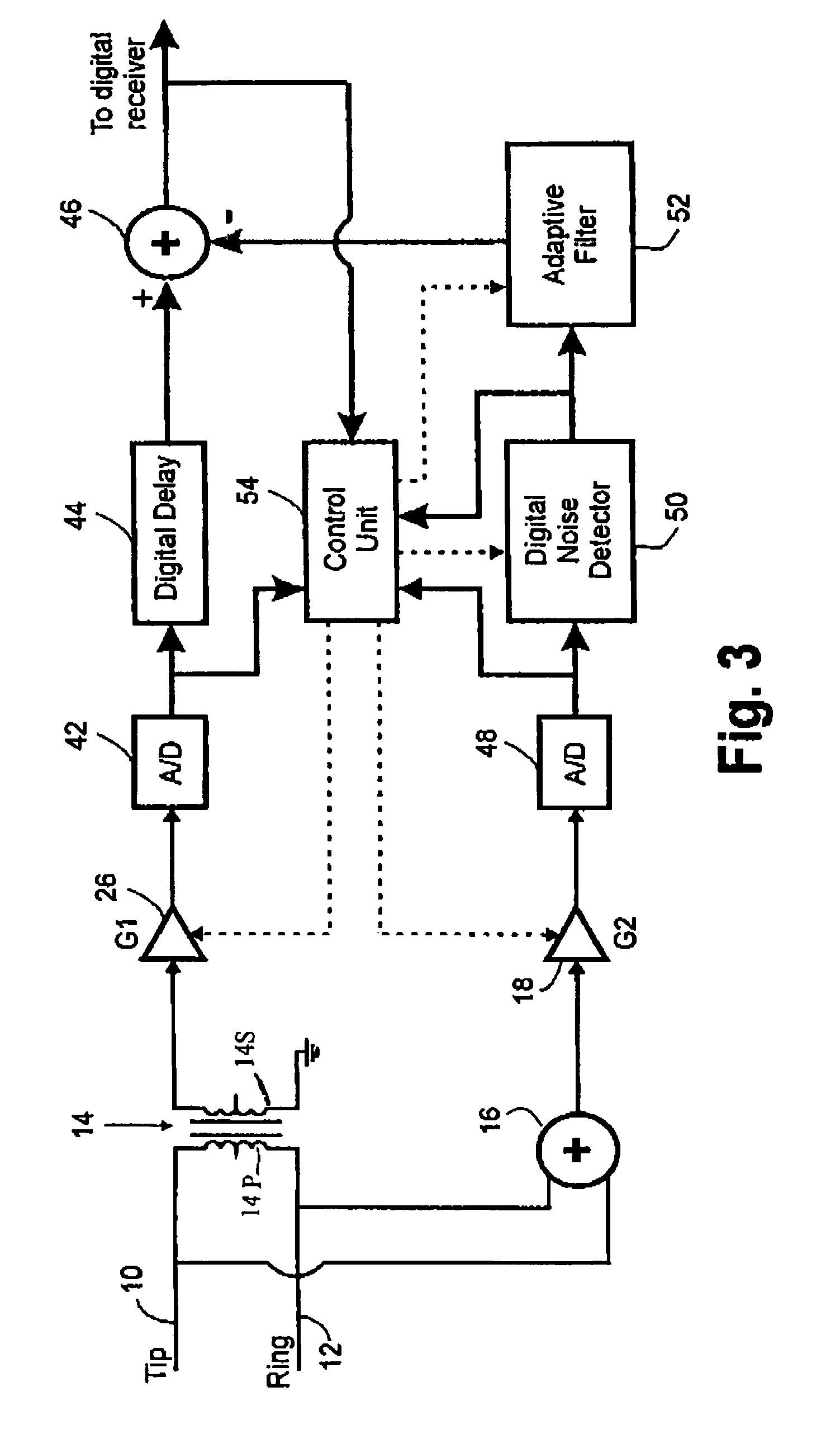Method and apparatus for cancelling common mode noise occurring in communications channels
a technology of communication channel and common mode noise, applied in the field of methods and apparatus for cancelling common mode noise occurring in communications channels, can solve the problems of conductors being untwisted, and one conductor to have greater leakage to ground
- Summary
- Abstract
- Description
- Claims
- Application Information
AI Technical Summary
Benefits of technology
Problems solved by technology
Method used
Image
Examples
first embodiment
[0025]FIG. 1 illustrates, schematically, a noise suppression circuit according to the invention connected to a communications channel. More specifically, the communications channel comprises a twisted-wire pair subscriber loop having the TIP and RING wires 10 and 12 connected to input means, specifically respective ends of the primary winding 14P of a hybrid transformer 14 and also to respective inputs of a summer 16 which extracts a common mode signal. The secondary winding 14S of the hybrid transformer 14 has one end grounded and the other end connected by way of a variable-gain amplifier 26 and an analog delay line 28 to one input of a summer 24, the output of which is coupled to the usual receiver (not shown). The hybrid transformer 14 converts the signal received from the subscriber loop 10 to a differential signal which includes a component corresponding to common mode noise in the received signal. The summer 24 subtracts from the differential signal a common mode noise estima...
second embodiment
[0028]FIG. 3 illustrates a noise cancellation circuit according to the invention which compensates for loop imbalance. The noise cancellation circuit comprises a differential signal path comprising a hybrid transformer 14 having its primary winding 14P connected to the TIP 10 and RING 12 of a twisted-wire pair subscriber loop. One end of its secondary winding 14S is grounded and the other end is connected to an input of a variable gain amplifier 26. The output of amplifier 26 is connected by way of an analog-to-digital converter 42 and digital delay unit 44 to a first input of a digital adder 46. The adder 46 subtracts from the delayed differential signal a common mode noise estimate signal which is derived via a common mode signal path comprising the summer 16, a variable gain amplifier 18, a second analog-to-digital converter 48, a digital noise detector (DND) 50 and an adaptive filter 52. The digitized common mode signal is applied to the digital noise detector which detects the ...
PUM
 Login to View More
Login to View More Abstract
Description
Claims
Application Information
 Login to View More
Login to View More - R&D
- Intellectual Property
- Life Sciences
- Materials
- Tech Scout
- Unparalleled Data Quality
- Higher Quality Content
- 60% Fewer Hallucinations
Browse by: Latest US Patents, China's latest patents, Technical Efficacy Thesaurus, Application Domain, Technology Topic, Popular Technical Reports.
© 2025 PatSnap. All rights reserved.Legal|Privacy policy|Modern Slavery Act Transparency Statement|Sitemap|About US| Contact US: help@patsnap.com



